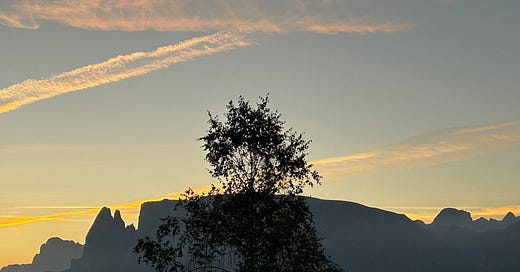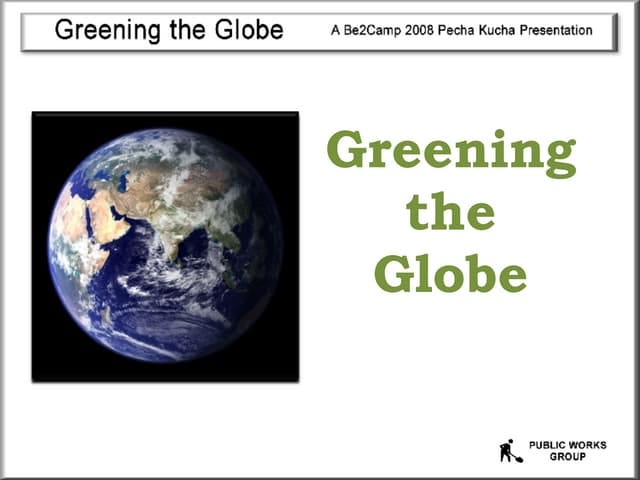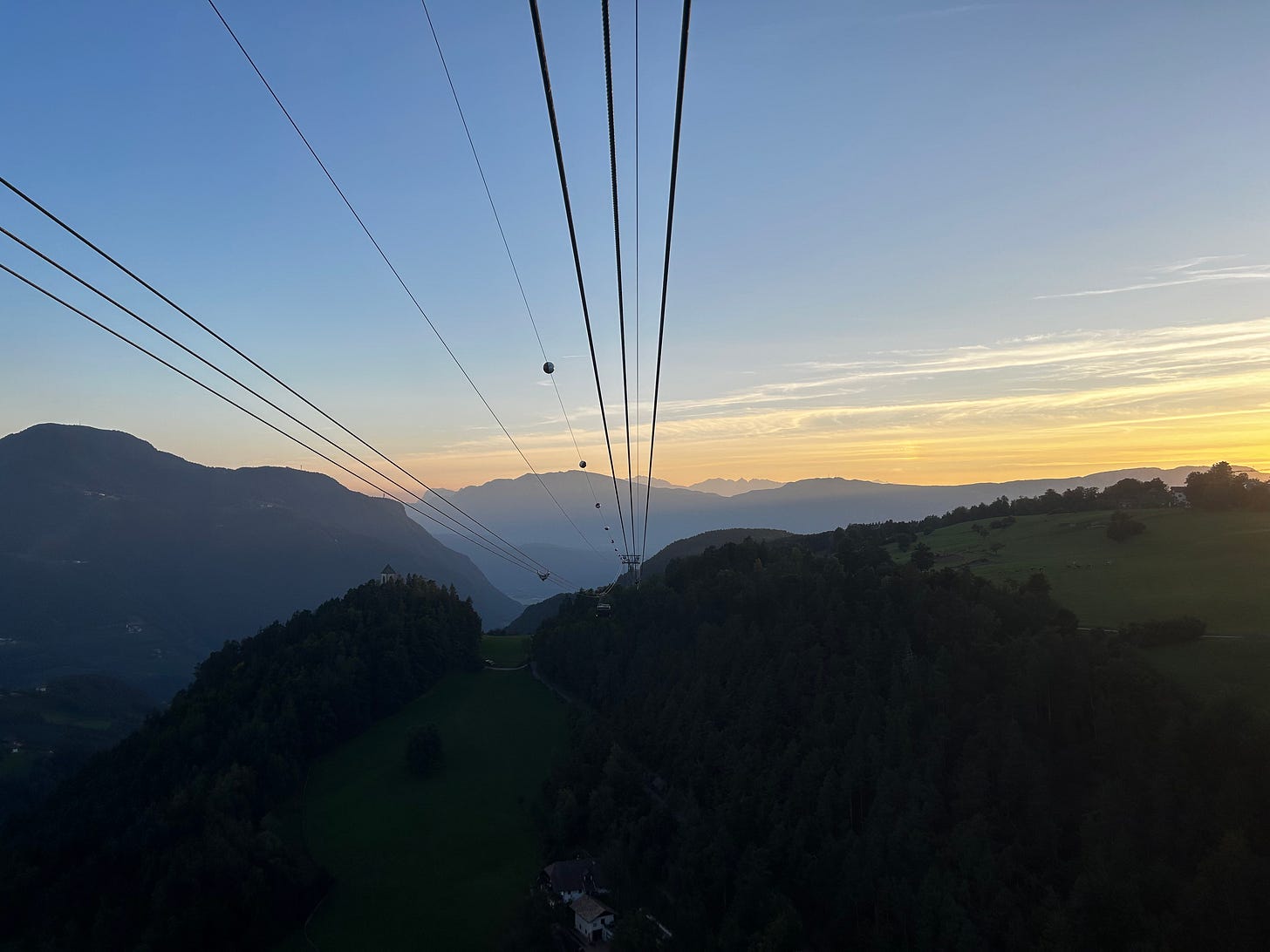Unconference re-energises Biophilic Architecture
Journal takeaway from the first Biophilia Barcamp ...
Back in 2008 we (that's Be2Camp) founded and held the first in a series of unconference events for the built environment. These were exciting times, learning and exploring the emerging social media and web2.0 scene in the built environment through the unconference approach often referred to as a barcamp (hence BE-2-Camp).
On that first unconference, some 50 people turned up - with no set agenda, other than to explore. Here I shared a Sustainability manifesto - to “Address sustainability as an issue of resilience – resilience to changing environmental, social, economic and technical issues”
The first Barcamp I attended was a 3DCamp in Limerick, Ireland, the year before, and that wowed me with sessions that inspired my passion for bringing unconference themes of emergence, co-creation, collaboration, and flow into many of the events and sessions I have facilitated since. (At that 3DCamp I presented a session on Second Life, in person, meeting co-presenter Pam Broviak from Chicago within Second Life discussing the possibility of that platform for 3D design prototyping and education)
Roll through to 2024 and I am delighted that through Living Future Europe we are hosting the first biophilia-focused barcamp. To be held on Friday 27 September in Bolzano. Biophilia BarCamp
An unconference is a loosely structured conference emphasising the informal exchange of information and ideas between participants, rather than following a conventionally structured program of events.
Unconferences originated in the tech community but have since been adopted across various fields. They are beneficial for rapidly evolving topics where the most current knowledge might come from practitioners rather than established experts.
The format encourages active participation, fosters creativity, and allows for exploring emerging ideas that might not fit into a traditional conference structure.
Key characteristics of a typical unconference or BarCamp would be
Flexible agenda: The schedule is created on the day of the event by attendees, not predetermined by organisers.
Self-organisation: Participants propose and lead sessions on topics they're passionate about or interested in exploring.
Open format: Sessions can take various forms, including discussions, workshops, presentations, or collaborative activities.
Voluntary participation: Attendees are free to move between sessions, following the "law of two feet" - if a session isn't meeting their needs, they're encouraged to find one that does.
Non-hierarchical: There's no distinction between "speakers" and "audience." Everyone is considered a peer with valuable contributions to make and an eagerness to learn.
Interactive: The focus is on conversation and collaboration rather than one-way presentations.
Spontaneity: New sessions can emerge based on discussions and interests that develop during the event.
Knowledge sharing: The goal is to tap into the collective expertise of all attendees, not just designated experts.
Networking: Unconferences provide ample opportunities for attendees to connect with like-minded individuals.
If you haven't attended a Bar Camp or unconference, take a read of this journal entry from an architect returning from the first Biophilia BarCamp. (Note this is my imaginative writing mind, putting myself into the shoes of a BarCamp participant)
September 27th, 2024
Today was unlike any conference I have ever attended. The unconference format in the heart of the Dolomites was truly transformative. I came here hoping to learn new biophilic design techniques, but I'm leaving with so much more – a renewed sense of purpose and a deeper connection to nature that I can't wait to infuse into my work.
During the morning session, I found myself sharing a personal story I'd never told professionally before. It was about that moment in our local nature park last year, standing beneath Silverdale ancient oaks and yews. I described how time seemed to stop, how I felt simultaneously insignificant and profoundly connected to something greater. The sense of awe was overwhelming – I still remember tears welling up.
To my surprise, opening up about this experience resonated deeply with the BarCamp group. Other architects, designers and contractors shared similar moments of connection with nature that had shaped their approach and journey to biophilic design. It wasn't just about green walls, plants, and natural materials anymore – we delved into how to evoke that sense of interconnectedness within built spaces.
One session explored the concept of "awe-inspiring architecture" – how we can create moments of pause and reverence for nature, even in city environments. We discussed incorporating elements that play with scale, like soaring atriums with views of the sky, or creating "forest bathing" spaces inside office buildings.
During an outdoor walk, we studied the way light filtered through pine forests, casting intricate shadows. It sparked a fascinating discussion on biomimicry and how we could replicate these patterns in interior lighting to evoke a similar sense of tranquillity.
The day flew by in a whirlwind of inspiration. I've filled pages of my notebook with ideas, I filled my sketchbook with images and rough watercolour inspirations – a hospital atrium designed to mimic a forest canopy, a school with learning pods shaped like birds' nests, a shopping centre that changes with the seasons like a deciduous forest.
But beyond the practical ideas, I'm taking away a renewed commitment to creating spaces that don't just mimic nature, but truly connect people to it such that through reciprocity they more than care for their natural environment. I want every building I design, or have design-build influence over, to have at least one moment, one space that takes your breath away, and reminds you of your place in the natural world.
As I sit here in my room, watching the sunset wash the Dolomites in shades of pink and gold, I feel a deep sense of gratitude. For this unconference, for colleagues who've become biophilia friends, and for the awe-inspiring nature that surrounds us.
Tomorrow, I'll head back home to my city with a mission: to bring a little bit of this magic into every space I create.
Regen Notes are my regenerative postcards … from where I am with my thoughts and activities in this place and space … Thank you for reading and subscribing, it means the world to me.





